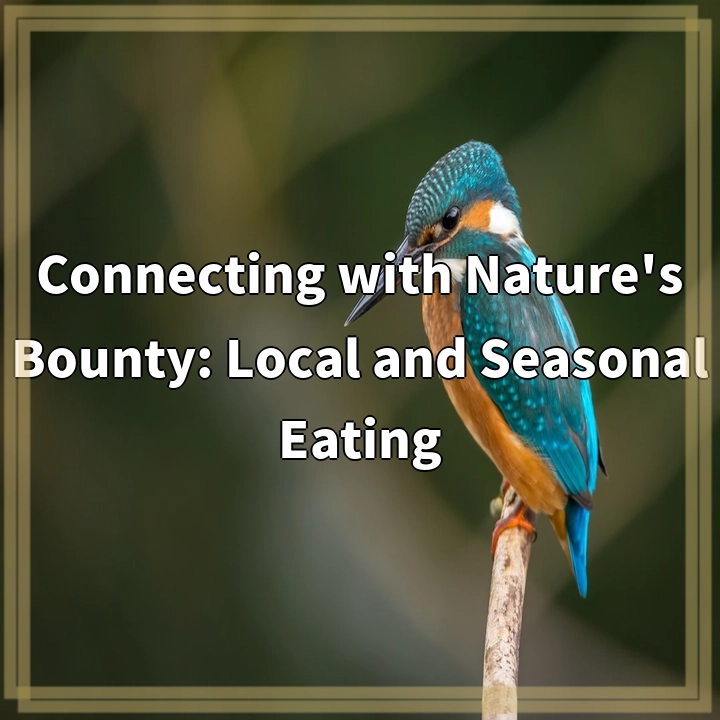
What is Local and Seasonal Eating?
Local and seasonal eating is a dietary approach that emphasizes consuming food products that are grown or produced locally and are in season. It involves choosing food that is sourced from nearby areas, reducing the distance between farm and plate, and opting for produce that aligns with the natural growing patterns of the region.
Real-World Problems Associated with Local and Seasonal Eating
While local and seasonal eating offers numerous benefits, it also presents some challenges and obstacles that need to be addressed. Here are a few real-world problems associated with this approach:
Limited Availability
One of the main difficulties of local and seasonal eating is the limited availability of certain foods throughout the year. As different regions have distinct growing seasons, it can be challenging to find a wide variety of fresh produce year-round. This can make it difficult to follow a completely local and seasonal diet consistently.
Increased Costs
Another potential problem with local and seasonal eating is the increased cost of certain products. Due to the shorter supply chain and smaller-scale production, local and seasonal food products may come with a higher price tag compared to their mass-produced counterparts. This can make it more challenging for some individuals or families with limited food budgets to prioritize these options.
Limited Knowledge and Accessibility
A lack of knowledge and accessibility can also be barriers to local and seasonal eating. Many people may not be aware of the benefits or how to access locally sourced and seasonal food options in their area. Additionally, some regions may have limited farmers’ markets, community-supported agriculture (CSA) programs, or other outlets for obtaining local and seasonal ingredients, making it harder to adopt this dietary approach.
Climate and Geography Constraints
Certain climates and geographic locations pose challenges for local and seasonal eating. Extreme or harsh climates may not support the year-round production of certain crops, making it necessary to rely on imported food during certain seasons. Additionally, regions with limited agricultural land or urban areas may face constraints in producing enough local and seasonal food to meet the demand of the population.

Possible Solutions for Local and Seasonal Eating Challenges
While there are challenges associated with local and seasonal eating, there are also strategies and solutions that can help overcome these obstacles. Here are some possible solutions:
Supporting Local Farmers and Markets
One way to address the limited availability and accessibility of local and seasonal food is by supporting local farmers and markets. By shopping at farmers’ markets, joining CSA programs, or purchasing directly from local producers, consumers can contribute to the demand for these products and help create a more sustainable and diverse food system.
Seasonal Preservation Techniques
To enjoy local and seasonal produce throughout the year, preservation techniques can be utilized. Canning, freezing, drying, or fermenting fruits and vegetables during their peak season allows for their consumption during periods when they are not locally available. This enables the continued inclusion of local and seasonal ingredients in meals and reduces reliance on imported or out-of-season produce.
Education and Awareness
Increasing knowledge and awareness about the benefits and availability of local and seasonal food is essential. Local governments, organizations, and individuals can play a role in educating their communities about the importance of supporting local agriculture and the positive environmental and health impacts of consuming seasonal food. This can be done through workshops, cooking demonstrations, and educational campaigns.
Adapting to Local Climate
In regions where climatic conditions restrict year-round production, it is crucial to adapt eating habits accordingly. Embracing the concept of “root to stem” cooking, which utilizes all parts of a plant, can minimize waste and maximize the use of locally grown produce. In addition, exploring traditional recipes and culinary techniques specific to the region can provide a diverse array of seasonal options that thrive in the local climate.
Incorporating these solutions can help individuals and communities overcome the challenges associated with local and seasonal eating. By supporting local farmers, preserving seasonal produce, promoting education and awareness, and adapting to the local climate, we can enhance the accessibility and sustainability of our food choices and strengthen our connection to nature’s bounty.















